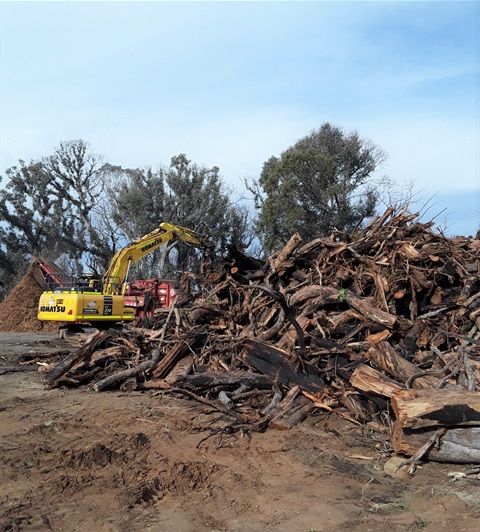Snowy Valleys Council Welcomes More Bushfire Recovery Funding
Published on 25 October 2021

Snowy Valleys Council has welcomed the announcement of just over $8 million in Government bushfire recovery funding to continue bushfire clean up works.
The NSW Government announced on Friday that they have committed more than $33 million to assist local councils with the continued clean up as communities rebuild following the devastating 2019-20 summer bushfires.
Snowy Valleys Council will receive $7,484,023 for green waste recovery and $600,000 for fencing recycling.
Council CEO Matthew Hyde said the $7.4 million will allow Council to implement clean-up and removal of green waste in public areas such as Reedy Creek and Weemala lookout and walking track in Batlow, Paddy’s River Falls, and the Hume and Hovell Track.
“We have been liaising closely with community groups who are understandably keen to see these impacted public spaces and walking tracks receive much needed clean up and repatriation,” Mr Hyde said.
“Council has already removed and chipped more than 8,000 loads of fire impacted debris and timber from Road Corridors across the Snowy Valleys and this funding will now allow us to continue the green waste clean-up process in highly valued community public spaces.”
The Government’s FenceCycle Program helps the bushfire recovery process by removing burnt fencing waste from private land and enabling land to be returned to productive uses. In the Snowy Valleys it is estimated that 2,500km of fencing was impacted by the fires including 852km of boundary fencing.
“The $600,000 from the FenceCycle program will be used to continue the collection and recycling of the metal components of burnt rural fencing materials that we successfully piloted in Jingellic and Tooma,” said Mr Hyde.
“This is an important environmental issue that aims to deal with fencing debris through recycling and reuse rather than harmful and illegal burial or landfilling.”
The Government funding programs were designed to address ongoing waste and recycling challenges faced by fire-impacted councils and other public land managers and extend support to account for major interruptions from subsequent flood impacts and COVID delays.
The two programs are part of a $4.5 billion NSW Government investment in bushfire recovery to support local communities with ongoing clean-up, temporary accommodation, and industry support.
Council clean-up works are slated to get underway later this year.
-ENDS-